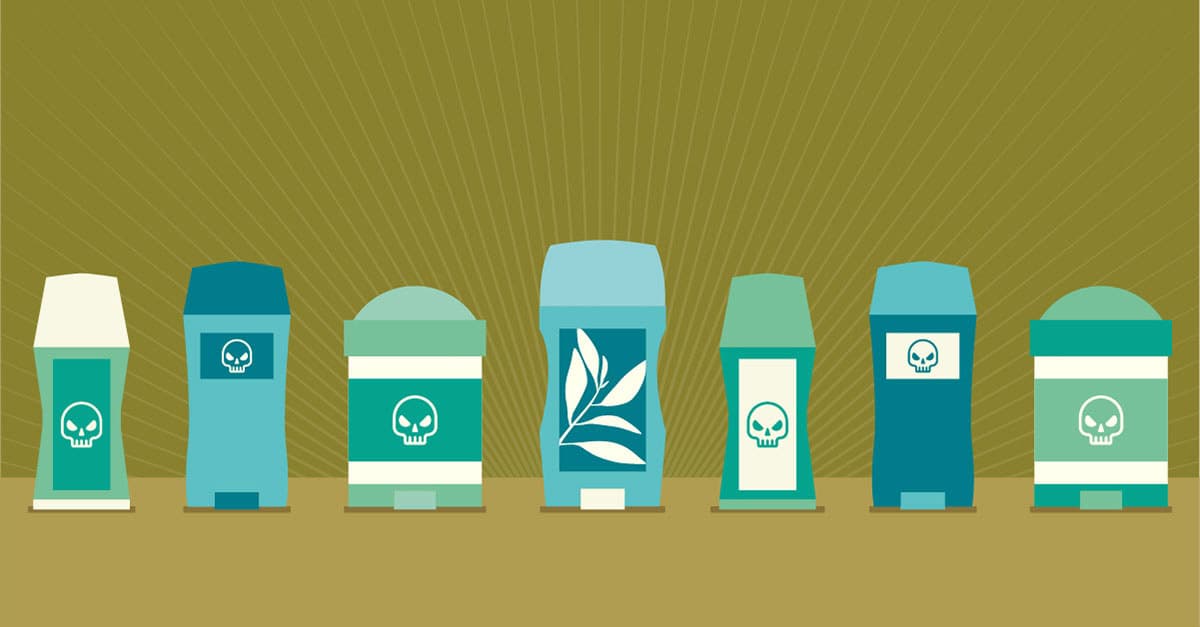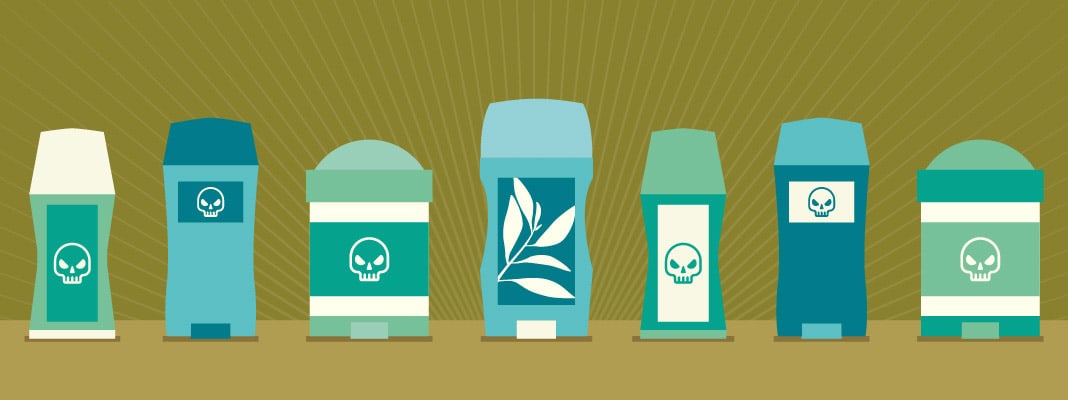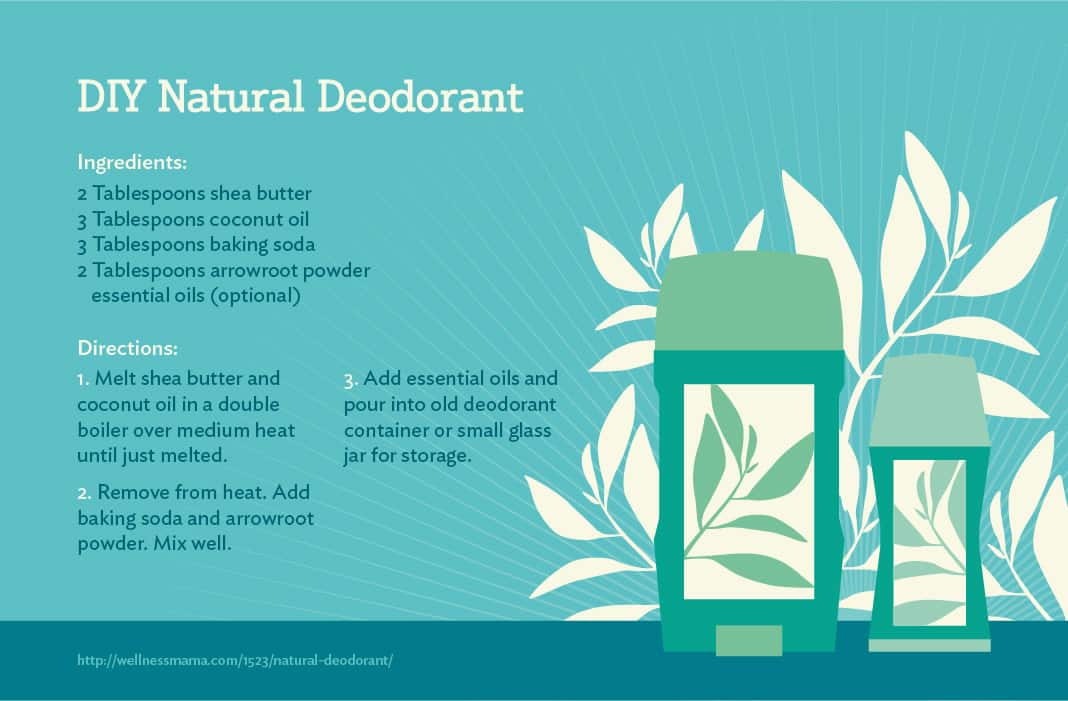Plenty of speed sticks don’t stack up. Here’s what you need to know before you de-stink.
When you think about natural beauty products, what do you envision? Mineral-free makeup? Soaps and shampoos without sketchy ingredients? Maybe an organic moisturizer? While these items can definitely fall under the umbrella of natural living, there’s one go-to toiletry most of us don’t consider: deodorant.
Swiping on scented, odor-blocking sweat stoppers seems innocent enough, especially when it’s a saving grace after a particularly sweaty subway ride or workout. Unfortunately, years of research suggest the ingredients used in many deodorants can actually be harmful to our health.
Blacklist: The Dangerous Ingredients Lurking in Deodorant
Parabens
Parabens, preservative chemicals added to personal care products (as well as some processed foods), help prevent bacteria from growing. Parabens mimic estrogen, resulting in hormonal disruption previously inked to breast cancer and reproductive issues. According to a study published in the Journal of Applied Toxicology, at least one form of paraben was present in samplings of breast tissue from 160 women who underwent mastectomies in the United Kingdom.
Triclosan
Triclosan is another hormonally disruptive chemical found in deodorants that also appears in dish detergents and toothpaste. According to the National Health and Nutrition Examination Survey, overexposure can increase a child’s risk for allergies. And to boot, a study from the University of California-Davis finds the chemical can also impair muscle function. Following consumer protest, this toxin made headlines earlier this year when the FDA announced plans to review the safety and efficacy of the ingredient in antibacterial soaps.
Phthalates
Trailing behind triclosan are phthalates. While these chemicals are mostly used as plasticizers, or to make plastic more flexible, they appear in personal care products too. According to the Centers for Disease Control and Prevention (CDC), phthalates have been linked to learning disabilities, behavior problems and even pre-term birth.
Aluminum
Aluminum isn’t just used in foil to wrap leftovers—it’s also another scary deodorant ingredient to look out for. A study published in the Journal of Inorganic Biochemistry compared the breast tissue of 19 breast cancer patients to that of healthy women. The researchers found the women with breast cancer had increased levels of aluminum, which the Centers for Disease Control consider a toxic substance. Per the CDC’s website, “exposure to high levels of aluminum may result in respiratory and neurological problems.”
Fragrances
Powder fresh and lavender fields may smell lovely, but these artificial fragrances can be problematic. A study published in the journal Contact Dermatitis found the (often unlabeled) ingredients manufacturers use to achieve a certain fragrance can cause contact allergies. And these fragrance mixes, according to the Mayo Clinic, are some of the leading causes of dermatitis, which is “inflammation resulting in swollen, red, and itchy skin”—not quite the fresh feeling consumers hope for.
Don’t Sweat The Small Stuff
Taking a step back from commercial deodorant doesn’t mean you have to commit to a lifetime of smelliness. Instead, there are natural, cleaner brands to choose from in an effort to minimize toxic exposure. For example, the gals who wrote No More Dirty Looks recommend certain brands, such as Weleda and Soapwalla (among others), while others highly approve of the brand Pure Pitz.
These options swap out toxic chemicals for essential oils, coconut oil, shea butter, and hops. Yep, you read that right: The ingredient you recognize from your happy-hour beer works naturally to stop the bacteria that produces odor. In fact, Tom’s of Maine is one “cleaner” brand that uses it in just about all products. While it may take a little time and research to find a good fit for a new deodorant, the good news is that there are budget-friendly solutions.
To the Kitchen! DIY Deodorant
Common household ingredients—think baking soda, cornstarch and again, essential oils—can be whipped together to concoct a DIY (dare we say delicious-smelling) deodorant. Many recipes (like this one from MindBodyGreen) also call for coconut oil, known for its antibacterial properties. Wellness Mama has similar coconut-inspired recipes here. Bottom line: Deodorant can, and should be, included in the clean beauty conversation. Going au natural doesn’t have to be, ahem … stinky.


